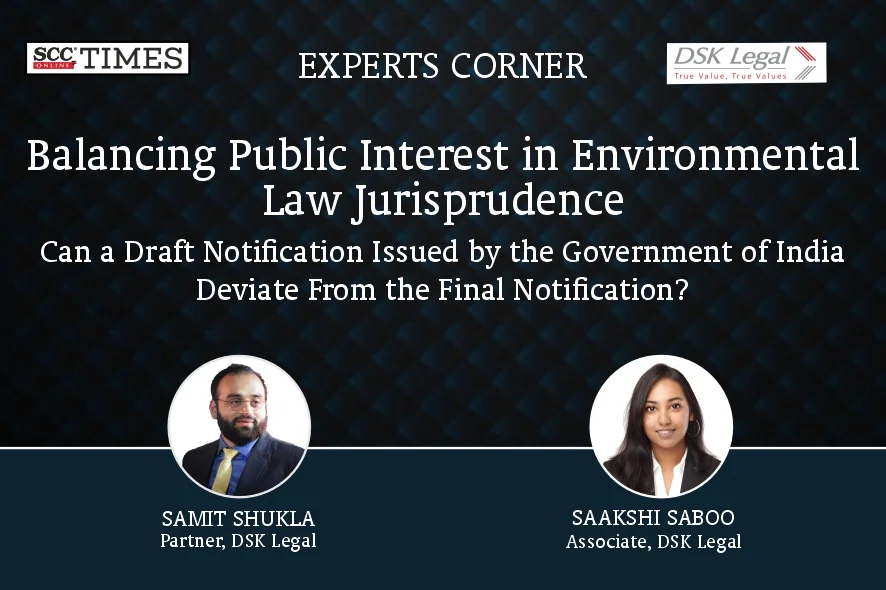The Kerala High Court has passed a judgment in a public interest litigation1, filed by “One Earth One Life” opining on the issue of whether a final notification issued by the Government of India (GOI) can deviate from the draft notification that was published prior thereto.
The judgment was passed in the context of a challenge to the Final Notification2, issued by the GOI amending the Schedule under Column (1) for Item 8 relating to environmental clearance for building/construction projects/area development projects and townships and sub-items 8(a) and (b) of the Environment Impact Assessment (EIA) Notification of 2006 (the final notification).
The final notification sought to inter alia amend: (i) definition of built-up area; and (ii) exclude projects or activities like industrial shed, schools, colleges and hostels for educational institutions for the purposes of environmental clearance. The issues raised in the writ petition were twofold. The first concerns the legal validity of the final notification which was different and deviated from the Draft Notification dated 11-9-2014 (the draft notification). The second issue was that the final notification stated that no objections or suggestions were received in response to the draft notification, and this was factually incorrect.
By judgment dated 6-3-20243, the Kerala High Court struck down the final notification on the ground that there was a difference between the draft notification and the final notification which was not permissible. Since the public at large was not aware of the intention of the GOI to modify the draft notification, the final notification was contrary to Section 23 of the General Clauses Act, 1897 which provides for the procedure for change in rules, bye-laws, etc.
Critical analysis of the judgment
A comparative table juxtaposing the Column (1) for Item 8(a), sub-column (5) as it stands in the EIA Notification of 2006 and the changes sought to be made in the draft notification and final notification are provided below.
|
As per original EIA notification |
As per draft notification |
As per the final notification |
|
(Built-up area for covered construction; in the case of facilities open to sky, it will be the activity area). |
The built-up area for the purpose of this notification is defined as “the built-up or covered area” on all the floors put together including basement(s) and other service areas, which are proposed in the building/construction projects. Note: (i) The projects or activities covered are residential buildings, commercial buildings, hotels, hospitals, hostels, office blocks and information technology/software development units/parks. (ii) “General condition” is not applicable. |
The term “built-up area” for the purpose of this notification the built-up or covered area on all floors put together including its basement and other service areas, which are proposed in the building or construction projects. Note: (i) The projects or activities shall not include industrial shed, school, college and hostel for educational institution, but such buildings shall ensure sustainable environmental management, solid and liquid waste management, rainwater harvesting and may use recycled materials such as fly ash bricks. (ii) “General conditions” shall not apply. |
The consequence of the judgment is as follows:
(a) Firstly, the definition of built-up area is restored to what was prescribed under the original EIA Notification (prior to22-12-2014).
(b) Secondly, projects or activities like industrial sheds, schools, colleges and hostels for educational institution would be covered under the building/construction activities and consequences under EIA Notification shall follow.
(c) Thirdly, the judgment does not qualify that activities carried on pursuant to the final notification shall remain unaffected so these will be open to scrutiny.
The GOI submitted that it was not the case that objections were not considered before issuing the final notification. There was a typographical error while issuing the final notification which was sought to be remedied by making a representation to the Legislative Department of the Ministry of Law. However, the GOI was informed the error could not be rectified by an amendment. Nevertheless, suggestions and objections were duly considered. On the second issue of the changes brought into the final notification, the GOI submitted that industrial sheds, schools, colleges and hostels for educational institutions were exempted considering the nature of activity being carried out. Importantly, these changes did not adversely impact the public at large so far as the environment was concerned.
In the judgment passed, the Kerala High Court limited its consideration to the issue of whether the final notification could deviate from the draft notification and consequently, set aside the final notification despite the objections and suggestions having been considered by the GOI.
*Partner, DSK Legal. Author can be reached at: samit.shukla@dsklegal.com.
**Associate, DSK Legal. Author can be reached at: saakshi.saboo@dsklegal.com.
1. Writ Petition (C) No. 3097 of 2016
2. Final Notification No. SO 3252(E) dated 22-12-2014, available at: http://www.scconline.com/DocumentLink/Bq6tPC5V
3. Writ Petition (C) No. 3097 of 2016







